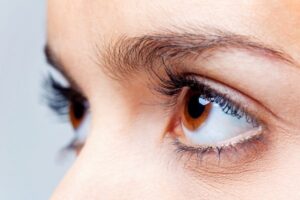How to Tell if Eyelid Lesions Are Benign or Malignant
 Eyelid lesions, while sometimes uncomfortable, are very common. They typically manifest as red lumps or bumps on or surrounding the eyelid, and they can vary in size. There are many types of lesions and conditions which cause them to appear, and, thankfully, the majority of eyelid lesions are benign. However, lesions can sometimes indicate the presence of more harmful issues, such as infection, disease, or even cancer.
Eyelid lesions, while sometimes uncomfortable, are very common. They typically manifest as red lumps or bumps on or surrounding the eyelid, and they can vary in size. There are many types of lesions and conditions which cause them to appear, and, thankfully, the majority of eyelid lesions are benign. However, lesions can sometimes indicate the presence of more harmful issues, such as infection, disease, or even cancer.
Although very few eyelid lesions prove to be malignant, finding and diagnosing dangerous conditions as soon as possible gives you the best chance of a positive prognosis.
Firstly, it is important to note that patients can develop eyelid lesions for several reasons, as the eyelid is among the most vulnerable parts of the human body. An eyelid is composed of a very thin layer of skin, additional layers of fat and subcutaneous tissue, and various types of glands. Lesions and tumors are liable to develop in virtually any of these areas. These are the types of lesions we see most often:
- Cysts, or chalazia, swollen bumps surrounding the eyelid which are caused by blocked oil glands
- Styes, or hordeolums, smaller, acne-like lumps near the base of the eyelashes, usually the result of bacterial infection
- Papillomas, also known as skin tags, which are benign tumors most common in the middle-aged or elderly
- Nevi, which resemble freckles on the eyelid and which are also a type of benign tumor. Nevi are sometimes associated with glaucoma.
Benign lesions like the ones listed above can fade on their own, but treatments exist to remove them if they prove to be invasive. Surgery may be warranted, but simpler procedures, such as excisional biopsies or laser ablation, are effective in many cases.
Meanwhile, certain bumps or lesions may indicate the presence of cancer. Alternatively, they may be precancerous, and patients may benefit from their immediate removal. Cancers most often associated with eyelid lesions include basal cell carcinoma, the most common type of skin cancer, typically caused by excessive sun exposure; squamous cell carcinoma, which can be a particularly aggressive type of skin cancer and develops in the mid or outer skin regions; melanoma, the most serious form of skin cancer; and orbital lymphoma, a cancer particular to the eye and eyelids.
If you experience any of the following symptoms, your ophthalmologist may suggest you be tested for cancer:
- Discharge
- Swelling
- Scaling
- Loss of eyelashes
- Discoloration (particularly of nevi)
- Rapid growth or spreading of the lesion
- Bleeding
Furthermore, if you have an eyelid lesion, please contact New Eyes today. We can can examine your medical history, perform any necessary tests, and rule out more sinister causes. Remember: your biggest form of defense against cancer is acting as soon as possible.
